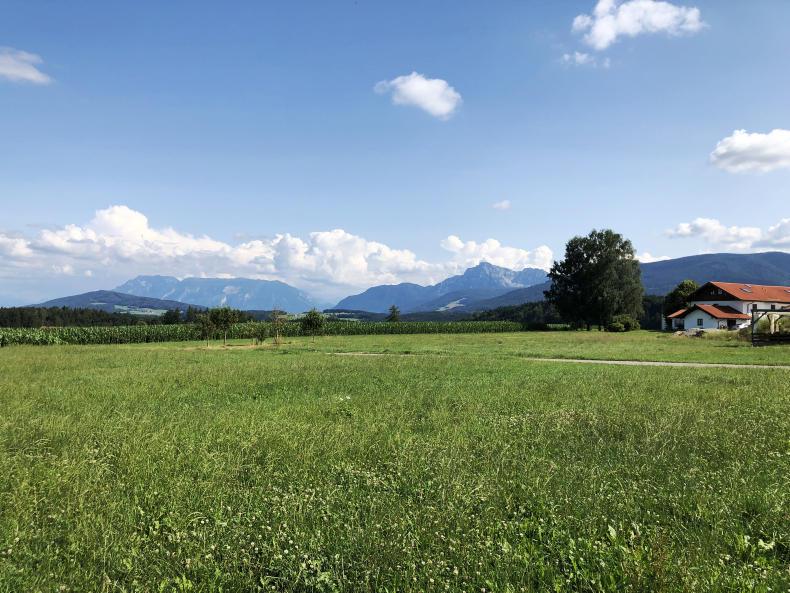I farm50ha alongside my family at the foot of the Alps in Teisendorf, Germany. Because I have duties off-farm as president of the Traunstein Beef Producers Association, I employ a farm manager for 30 hours per week too. In this region, 50ha farms would not be the norm – most are much smaller. I am lucky in that I am able to make a living off the farm for myself and my family. CAP income is about 30% of our overall income. By and large, most farmers in these parts need to generate an extra income, either through services provided to the community like timber work, or through tourism.
Back to the farm details, we are currently milking 50 Fleckvieh cows. A Lely robot does this. All lactating cows are kept indoors and receive a diet of 50% maize and 50% silage. Dry cows graze outside. The land is broken into 70% meadow ground and 30% arable ground. About 10% of the meadow ground would be steep hills, only fit for grazing. Our location at the foot of the Alps provides a good grass-growing climate. Average rainfall would be similar to Ireland at around 1600mm per year and we get a Mediterranean air-flow in the spring which kickstarts grass growth sooner. As a result, we can grow six crops of grass per year.
Our target milk yield is 9,000l/cow/year. The milk is marketed through a co-operative containing around 2,500 farmers. We are getting a price of 44c/l for GM-free milk but our cost of production is high at 30c/l to 34c/l. The standard milk price in Germany is about 32c/l.
Fleckvieh is a dual-purpose breed so beef production is also a big part of our system. Calves are weaned from their mothers very soon after birth. They are reared indoors on milk up until 12 weeks of age. Once they reach six months old, males and females are separated. Bulls gradually move on to a diet of two-thirds maize and one-third silage. Some rapeseed grind is also added. Our target is to slaughter bulls at 20 months of age, into a carcase weight of 430kg. That’s a lifetime average daily gain of 1.15kg. Factories look for carcase weights of between 330kg and 430kg. Also, they need to be U-grading and fat score 2. Most of our bulls achieve this. As things stand, the price for bulls is the worst it has been for over five years and sits at around €3.50/kg. That said, we have no plans to move away from bulls just yet.
When separated at six months, the females move to the milking shed. The target age at first calving is 28 months and all females on the farm are bred through AI. Cows stay on the farm until an average age of 6.8 years and because of their dual-purpose genetics, cull cows are worth approximately €1,200/head, based on current prices. From a health perspective, the main issue would be streptococci. Feet are not too much of a problem, mainly because we pare the cows twice annually. Coccidiosis is the biggest health threat to the calves.
As is the case with many farms in Germany, our farm is CO2 neutral thanks to our solar panels. Each shed roof is fitted with panels. On average, about half of the electricity we produce is required to power the farm – the other half is sold into the grid.






 This is a subscriber-only article
This is a subscriber-only article










SHARING OPTIONS: